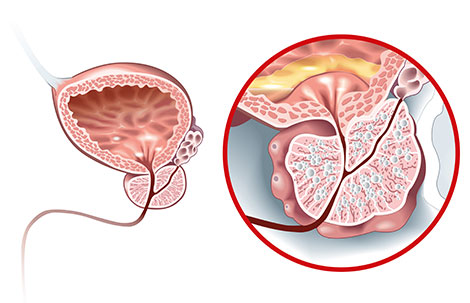
The prostate, located just below the bladder and in front of the rectum, is a vital organ for the reproductive system. Prostatitis, also known as prostate inflammation, refers to the inflammation of the prostate gland. This condition often causes issues and pain in men. It is generally a simple problem to treat. Prostatitis can occur in various forms. While some types of prostate issues may resolve without treatment, others require medical intervention. For those requiring treatment, medications help to eliminate the inflammation from the body quickly.
Prostatitis predominantly affects men under the age of 50. In men over 50, it manifests as prostate enlargement. The final stage of this problem is prostate cancer. It is among the main health problems experienced by almost every man with age.
Prostatitis can be categorized into four main groups: chronic bacterial prostatitis, chronic pelvic pain syndrome, asymptomatic inflammatory prostatitis, and acute bacterial prostatitis. Of these four categories, chronic pelvic pain syndrome is the most common.
The prostate plays a role in the secretion of semen. It is also crucial for the vitality and motility of the sperm within the semen. When there is any problem with the prostate gland, it negatively impacts both the overall health and sexual health of the patient.
Prostatitis exhibits various symptoms, including:
These symptoms may indicate prostatitis. It is important to seek medical help if these symptoms are persistent for proper treatment.
Scientific studies have shown that prostatitis and erectile dysfunction may stem from the same cause. Inflammation that leads to erectile dysfunction can also cause prostatitis. In other words, men with prostatitis are likely to experience erectile dysfunction as well. Additionally, in cases of prostate cancer, the inflammation can affect the male hormones due to hormonal treatments. Consequently, a person undergoing prostatitis treatment may experience erectile problems due to the hormones. In prostate cancer surgeries, nerves related to erection are often removed, leading to significant erectile issues.
Low-intensity shock wave therapy is a method that uses low-level shock waves to treat problem areas. These waves cause mechanical stress and micro-trauma to the affected area, which improves blood flow and accelerates healing through biological reactions. As a result, the amount and flow rate of blood to the penis increase, alleviating blockages and improving penile health, thereby resolving erectile dysfunction.
Modus ED SWT therapy is applied through the perineum (the area between the testicles and anus) and the skin. It requires no invasive procedures. After the procedure, patients can resume their normal activities immediately. No anesthesia or hospital stay is required. The treatment is performed twice a week for a minimum of 6-12 sessions, each lasting approximately 20 minutes.
In cases like prostatitis, treatments typically involve medications. If antibiotics fail, surgical interventions may be necessary, which can cause significant damage and side effects to various organs, reducing the patient's quality of life.
Modus ED SWT therapy promotes new blood vessel formation, increases blood flow, prevents inflammation, and stimulates nerve responses. This leads to long-term resolution of urinary and sexual dysfunction problems.
Modus ED SWT is a focused treatment method, with no pathological side effects observed. It is effective even in severe cases and is a non-invasive therapy, meaning no surgical procedures are involved. After 20-minute sessions, patients can continue with their daily lives.
No preparation is needed before this treatment. There is no occurrence of pain, swelling, discomfort, burning, bruising, or irritation before, during, or after the procedure, making it a very reassuring treatment.